Agriculture
The ‘green economy’ is suddenly in retreat in the US and Europe. Why?

BERLIN, GERMANY – JANUARY 08: Tractors of protesting farmers line Strasse des 17. Juni street in front of the Brandenburg Gate on the first day of a week of protests on January 08, 2024 in Berlin, Germany
From LifeSiteNews
Pundits across the world are still trying to figure out why Green parties crashed so hard, which leads one to wonder if they were paying attention.
In February, a stream of tractors driven by Italian farmers arrived at the outskirts of Rome, horns blaring. The scene, which was captured by the Agence France-Presse, was just one of dozens of protests across Europe against EU regulations that farmers said threatened to put them out of work.
“They’re drowning us with all these regulations,” one farmer at a protest in Pamplona, Spain, told The Guardian. “They need to ease up on all the directives and bureaucracy.”
The protests were nothing new. They began in 2019 when Dutch farmers, for the first time, drove some 2,000 tractors to The Hague to protest radical legislation designed to reduce carbon emissions, which disproportionately impacted farmers.
Dutch lawmakers responded in 2022 by passing legislation that required farms near nature reserves to slash nitrogen emissions by 70 percent.
“About 30 percent of the country’s cows and pigs will have to go,” The Economist noted.
The policy was part of the government’s plan to sharply reduce livestock farming in Europe. The thinking was that since the livestock sector contributes to about a third of all nitrogen emissions globally, the government would have to target farmers to meet its goal to cut nitrogen emissions in half by 2030.
So Dutch farmers were given a bleak choice: give a portion of their land to the government or have it taken away. By 2023, some 750 Dutch farmers had reportedly sold their land as part of the state’s buy-out scheme. Others were still trying to find a way to preserve their livelihoods.
When asked by a reporter in 2023 whether he thought he would be able to pass his farm on to his children, one Dutch farmer struggled to speak.
“No,” he said tearfully. “No.”
🇳🇱 When asked if this Dutch farmer believed he would be able to pass on his farm to his children, he couldn’t hold back his tears.
This is the heartbreaking reality of the #DutchFarmers in 2023. All because of Mark Rutte and his totalitarian land grab policies.
©@ongehoordnedtv pic.twitter.com/yS8Y757XiT
— Eva Vlaardingerbroek (@EvaVlaar) May 10, 2023
The ‘Great Green Retreat’?
Farmers are not the only ones unhappy with Brussels’s aggressive war on climate change.
The European Union’s effort to reach “net zero” CO2 emissions by 2050 has rankled voters across the continent, something political leaders seem to have realized. Earlier this year, The Guardian lamented the EU’s “great green retreat,” which included a pullback on a bevy of “Green New Deal” regulations, including:
- Plans to put sharp new restrictions on the use of pesticides.
- Bans on PFAS (per- and polyfluoroalkyl substances), man-made chemicals that are used in countless everyday products.
- Rules restricting new industrial emission, which were relaxed on industries and tweaked to exclude cattle farms altogether.
- Calls to relax a pending anti-deforestation law, which, according to Reuters, officials believe could hurt European farmers.
Whether this retreat stemmed from concerns that these environmental regulations would cause serious harm to the economy (and European farmers), or from concern that the Green agenda would lead to a bloodbath at the ballot box, is unclear.
Whatever the case, the reversal didn’t prevent a historic defeat for Green parties in June’s European Parliament elections, which saw them lose a third of their seats.
“There is no sugarcoating it,” the New York Times lamented following the June elections, “the Greens tanked.”
Political scientist Ruy Teixeira described the event as a “Greenlash.”
“In Germany, the core country of the European green movement, support for the Greens plunged from 20.5 percent in 2019 to 12 percent,” Teixeira, a scholar at the American Enterprise Institute, noted.
He continued:
Shockingly, among voters under 25, the German Greens actually did worse than the hard right Alternative for Germany (AfD). That contrasts with the 2019 elections, when the Greens did seven times better than the AfD among these young voters.
And in France, Green support crashed from 13.5 percent to 5.5 percent. The latter figure is barely above the required threshold for party representation in the French delegation.
Bans against hot showers and swimming pools?
Pundits across the world are still trying to figure out why Green parties crashed so hard, which leads one to wonder if they were paying attention.
It wasn’t just crackdowns on farming. Facing an energy crisis, governments across Europe began to roll out regulations forcing Europeans to adopt, shall we say, more spartan lifestyles.
“Cold swimming pools, chillier offices, and shorter showers are the new normal for Europeans,” Business Insider reported, “as governments crack down on energy use ahead of winter to prevent shortages.”
In other words, instead of producing or purchasing more energy, governments began to crack down on energy consumption.
It didn’t stop there.
In May 2023, months after Germany shut down its last three remaining nuclear power plants, the Financial Times reported that many Germans were “outraged and furious” at a law that forced them to install heating systems that run on renewable fuels, which are far more expensive than gas-powered boilers.
The action was even more invasive than the European Union’s sprawling ban on gas-powered vehicles that was finalized just months before.
“[The EU] has taken an important step towards zero-emission mobility,” EU environment commissioner Frans Timmermans said on Twitter. “The direction is clear: in 2035 new cars and vans must have zero emissions.”
Wall Street’s $14 trillion exit
The Green policies emerging from Europe did little to alleviate Americans’ concerns that the climate policies of central planners are not driven by sound economics. Yet many similar policies have taken root in the U.S.
As of March 2024, no fewer than nine U.S. states had passed laws to ban the sale of gas-powered cars by 2035. Meanwhile, the Biden administration recently doubled down on an EPA policy to begin a coerced phase-out of gas-powered vehicles — even though the federal effort to build out the charging stations to support EVs has flopped spectacularly (despite $7.5 billion in funding).
Despite federal subsidies for EVs, a majority of Americans remain unsold on them, and the sputtering EV market has left a wake of carnage. In June, the EV automaker Fisker Inc., which in 2011 received half a billion dollars in guaranteed loans from the US Department of Energy, filed for Chapter 11 bankruptcy in Delaware. (Fisker had long drawn comparisons to Solyndra, the solar panel company that went belly up in 2011 just two years after receiving $535 million from the US government.)
Fisker’s bankruptcy came just months after the New York Times reported on a massive exodus of capital from Climate Action 100+, the world’s largest investor initiative on climate change. JPMorgan Chase and State Street pulled all funds, while BlackRock, the world’s largest asset manager, reduced its holdings and “scaled back its ties to the group.”
“All told, the moves amount to a nearly $14 trillion exit from an organization meant to marshal Wall Street’s clout to expand the climate agenda,” the Times reported.
Days after the Times report, PIMCO also announced it was leaving Climate Action 100+. Invesco, which manages $1.6 trillion in assets, made its exit just two weeks later.
‘You cannot avoid the consequences of avoiding reality’
There’s no doubt that the Green economy is in retreat, but the question is, Why?
First, it’s becoming apparent — especially in Europe where energy is more scarce and expensive — that people are souring on Green policies.
As Teixera noted, voters don’t actually like being told what car they must drive and how to cook their food and heat their homes. If you own a swimming pool, you probably want to be able to heat it.
Policymakers talk about “quitting” fossil fuels, but in recent years Europeans got to experience an actual fossil-fuel shortage following Russia’s invasion of Ukraine, which disrupted fossil fuel imports. The result was energy rationing, something Europeans don’t seem to care for.
This brings me to my second point. Green parties and environmentalists have had success largely by getting people to focus on the desired effect of their policies (saving people from climate change) and to ignore the costs of their policies.
Politicians seem to grasp that their policies come with trade-offs, which is why their bans and climate targets tend to be 10, 15, or 30 years into the future. This allows them to bask in the glow of their climate altruism without dealing with the economic consequences of their policies.
This is one of the most salient differences between economics and politics. Economics is all about understanding the reality of trade-offs, but politics is primarily about ignoring or concealing these realities.
Few understood this better than the economist Henry Hazlitt, the author of Economics in One Lesson, who wrote time and again about the tendency of politicians to overlook the secondary consequences of their policies, which were responsible for “nine-tenths of the economic fallacies that are working such dreadful harm in the world today.”
For a time, politicians were able to ignore the secondary consequences of their policies. But voters are finally getting a taste of the costs of Green policies, and they don’t like it.
“You can avoid reality,” Ayn Rand once noted, “but you cannot avoid the consequences of avoiding reality.”
An ‘iron’ law
Fear of climate change has helped progressives and Greens gain more economic control in recent decades, but even fear has its limits.
Teixera points to Roger Pielke, Jr., a University of Colorado Boulder professor who in 2009 wrote about the “iron law of climate policy.”
“Climate policy, they say, requires sacrifice, as economic growth and environmental progress are necessarily incompatible with one another,” he wrote. “This perspective has even been built into the scenarios of the IPCC.”
Whether one accepts this premise — that economic growth and environmental progress are necessarily incompatible — doesn’t matter. What matters is that when economic growth policies collide with emission reduction targets, economics wins.
It’s one thing to say that gas prices should be $9 a gallon, as physicist Steven Chu once did, because climate change is a dire threat. It’s another thing to say this while trying to become Energy Secretary, as Chu was while testifying before the Senate in 2012:
Sen. Mike Lee: ‘So are you saying you no longer share the view that we need to figure out how to boost gasoline prices in America?’
Chu: ‘I no longer share that view… Of course we don’t want the price of gasoline to go up; we want it to go down.’
You can call this the “iron law of climate policy,” or you can call it common sense. (Who wants gas to go to $9 a gallon?) Essentially, it’s lofty environmental goals colliding with economic and political reality.
This phenomenon is also conspicuous in Joe Biden’s presidency. On day one, the president nixed the Keystone XL Pipeline (for inexplicable reasons), and would go on to declare global warming a greater existential threat than a nuclear war.
Yet he would later boast that his policies were lowering gasoline prices, and that he oversaw record-high U.S. oil production.
This is the iron law of climate policy, and it explains why the Green economy is suddenly in retreat all over the world.
Not-so-‘green’ policies
The reality is that the Green agenda comes with steep trade-offs, something Europeans, Americans, and Wall Street are finally beginning to admit.
But Europe’s energy policies haven’t just been unpopular; many of them haven’t even been “Green.”
For starters, electrical vehicles are hardly the environmental panacea many claim them to be. In fact, EVs require much more energy to produce on average than gas-powered vehicles, and also often run on electricity generated by fossil fuels. This means that EVs come with their own carbon footprints, and they tend to be much larger than most realize.
An analysis by the Wall Street Journal found that shifting all personal vehicles in the U.S to EVs would reduce global CO2 emissions by only 0.18 percent. This would do virtually nothing to change global CO2 emission trends, which data show are rising not because of European or US personal vehicles, but from emerging economies like China.

And then there’s Germany’s bizarre decision to abandon nuclear power. Despite an eleventh-hour plea from a group of scientists (including two Nobel laureates) who urged lawmakers not to do so because it would exacerbate climate change, Germany closed its last three nuclear power plants — Emsland in Lower Saxony, Neckarwestheim 2 in Baden-Württemberg, and Isar 2 in Bavaria — in the middle of an energy crisis.
The move puzzled many around the world. After all, nuclear energy is cleaner and safer than any other energy source with the exception of solar, according to estimates from Our World in Data. Even more bizarre, Germany’s phaseout of nuclear power, which began in 2011, coincided with a return to coal.
Germany’s decision to ramp up coal production and shutter its last nuclear plants is hardly consistent with the EU’s view that climate change is a dire threat to human kind, many noted.
“No less a climate-change evangelist than Greta Thunberg has argued publicly that, for the planet’s sake, Germany should prioritize the use of its existing nuclear facilities over burning coal,” journalist Markham Heid pointed out at Vox.
Meanwhile, in the US, where nuclear power has been steadily attacked for decades by politicians and environmentalists, the Senate quietly passed (by a vote of 80–2!) a bill to support the deployment of nuclear facilities.
These anecdotes illustrate an important point: Green policies are not just unpopular and uneconomical; they are often senseless.
Few understand this better than Dutch farmers, who are being forced to sell off their farms by politicians who have little understanding of economics trade offs.
Reprinted with permission from American Institute for Economic Research.
Agriculture
Canada’s supply management system is failing consumers

This article supplied by Troy Media.
The supply management system is cracking. With imports climbing, strict quotas in place and Bill C202 on the table, we’re struggling to feed ourselves
Canada’s supply management system, once seen as a pillar of food security and agricultural self-sufficiency, is failing at its most basic function:
ensuring a reliable domestic supply.
According to the Canadian Association of Regulated Importers, Canada imported more than 66.9 million kilograms of chicken as of June 14, a 54.6 per cent increase from the same period last year. That’s enough to feed 3.4 million Canadians for a full year based on average poultry consumption—roughly 446 million meals. Under a tightly managed quota system, those meals were supposed to be produced domestically. Instead imports now account for more than 12 per cent of this year’s domestic chicken production, revealing a growing dependence on foreign supply.
Supply management is Canada’s system for regulating dairy, poultry and egg production. It uses quotas and fixed prices to match domestic supply with demand while limiting imports, intended to protect farmers from global price swings and ensure stable supply.
To be fair, the avian influenza outbreak has disrupted poultry production and partially explains the shortfall. But even with that disruption, the numbers are staggering. Imports under trade quotas set by the World Trade Organization, the Canada-United States Mexico Agreement and the Comprehensive and Progressive Agreement for Trans-Pacific Partnership are running at or near their allowable monthly share—known as pro-rata
levels—signalling not just opportunity, but urgency. Supplementary import permits, meant to be used only in emergencies, have already surpassed 48 million kilograms, exceeding total annual import volumes in some previous years. This isn’t a seasonal hiccup. It’s a systemic failure.
The system, designed to buffer domestic markets from global volatility, is cracking under internal strain. When emergency imports become routine, we have to ask: what exactly is being managed?
Canada’s most recent regulated chicken production cycle, which ended May 31, saw one of the worst shortfalls in over 50 years. Strict quota limits stopped farmers from producing more to meet demand, leaving consumers with higher grocery bills and more imported food, shaking public confidence in the system.
Some defenders insist this is an isolated event. It’s not. For the second straight week, Canada has hit pro-rata import levels across all chicken categories. Bone-in and processed poultry, once minor players in emergency import programs, are now essential just to keep shelves stocked.
And the dysfunction doesn’t stop at chicken. Egg imports under the shortage allocation program have already topped 14 million dozen, a 104 per cent jump from last year. Not long ago, Canadians were mocking high U.S. egg prices. Now theirs have fallen. Ours haven’t.
All this in a country with $30 billion in quota value, supposedly designed to protect domestic production and reduce reliance on imports. Instead, we’re importing more and paying more.
Rather than addressing these failures, Ottawa is looking to entrench them. Bill C202, now before the Senate, seeks to shield supply management from future trade talks, making reform even harder. So we must ask: is this really what we’re protecting?
Meanwhile, our trading partners are taking full advantage. Chile, for instance, has increased chicken exports to Canada by more than 63 per cent, now accounting for nearly 96 per cent of CPTPP-origin imports. While Canada doubles down on protectionism, others are gaining long-term footholds in our market.
It’s time to face the facts. Supply management no longer guarantees supply. When a system meant to ensure resilience becomes a source of fragility, it’s no longer an asset—it’s an economic liability.
Dr. Sylvain Charlebois is a Canadian professor and researcher in food distribution and policy. He is senior director of the Agri-Food Analytics Lab at Dalhousie University and co-host of The Food Professor Podcast. He is frequently cited in the media for his insights on food prices, agricultural trends, and the global food supply chain.
Troy Media empowers Canadian community news outlets by providing independent, insightful analysis and commentary. Our mission is to support local media in helping Canadians stay informed and engaged by delivering reliable content that strengthens community connections and deepens understanding across the country.
Agriculture
Unstung Heroes: Canada’s Honey Bees are not Disappearing – They’re Thriving
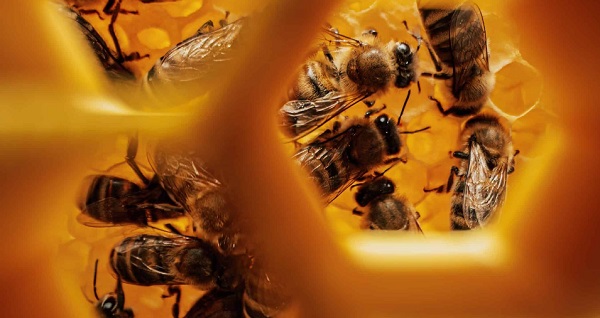
Canada’s Bee Apocalypse began in 2008. That was the year the Canadian Association of Professional Apiculturists (CAPA) first reported unusually high rates of winter bee colony losses. At 35 percent, the winter die-off that year was more than twice the normal 15 percent rate of attrition.
“Successive annual losses at [these] levels … are unsustainable by Canadian beekeepers,” the CAPA warned. This set off an avalanche of dire media reports that now appear on a regular basis. Among the many examples over the years: Huge Honey Bee Losses Across Canada” and “Canada’s bee colonies see worst loss in 20 years”. As each of these stories reminds readers, the disappearance of honey bees will doom our food supply, given their crucial role in pollinating crops including canola, soyabeans, apples, tomatoes and berries.
This year the black-and-yellow striped Cassandras are back at work, with headlines shouting “Scientists warn of severe honeybee losses in 2025” and “The Bees are Disappearing Again”. If it’s spring, the bees must be disappearing. Again.
It is, however, mathematically impossible for any species to be in an allegedly continuous and calamitous state of decline over nearly two decades and never actually reduce in number. For despite the steady supply of grave warnings regarding their imminent collapse, Canada’s bees are actually buzzing with life.
In 2007, according to Statistics Canada, there were 589,000 honey bee colonies in Canada,; in 2024, they reached 829,000, just shy of 2021’s all-time high of 834,000. Figuring a conservative summertime average of 50,000 bees per colony, that means there are approximately 12 billion more honey bees in Canada today than when the Bee Apocalypse first hit.
As for beekeepers, their numbers have also been growing steadily, and now stand at 15,430 – the most recorded since 1988. As CAPA’s report acknowledges, “the Canadian beekeeping industry has been resilient and able to grow, as proven by the overall increase in the number of bee colonies since 2007 despite the difficulties faced every winter.”
How is this possible? As is usually the case where there’s a need to be filled, the market holds the answer.
It is true that Canadian honey bees face a long list of threats and challenges ranging from mites and viruses to Canada’s harsh winters. It is also true that they perform a crucial service in pollinating crops, the value of which is estimated at $7 billion annually. However, this underscores the fact that bees are a livestock bred for a particular agricultural purpose, no different from cattle, chickens or pen-raised salmon. They are a business.
And in spite of its alleged status as an environmental totem, the honey bee isn’t even native to North America. It was first imported by European settlers for its honey-making abilities in the 1600s. Since then, it has been cultivated with deliberate commercial intent – allowing it to outcompete native pollinators such as bumble bees and butterflies even though it is poorly suited to the local winter. (This highlights the irony of all those native-plant pollinator gardens virtuously installed in neighbourhoods across Canada that end up supporting an invasive honey bee population.)
The significance of the bee economy means that when a beehive collapses over the winter for whatever reason, beekeepers have plenty of motivation to regenerate that colony as swiftly as possible. While hives can create their own queens over time, this can be a slow process given the cold Canadian climate. The better option is to simply buy a new queen from a warmer country.
In 2024, Canada imported 300,000 queens worth $12 million, mostly from the U.S., Italy, Australia and Chile. That works out to $40 each. In a miracle of nature, each of these new queens can lay up to 2,500 eggs a day, and each egg takes just two to three weeks to reach full maturity as a worker or drone. It is also possible to import entire “bee packages” that include a queen and 8,000 to 10,000 bees.
As a result, even a devastating 50 percent winter loss rate, something that has occurred only rarely in Canada in individual provinces and never nationally, isn’t necessarily fatal to any beekeeping operation. The beekeeper can purchase imported queens in April, split their existing colonies and be back in business by May or June.
And regardless of the honey bee’s apparent difficulties with Canada’s unforgiving weather (efforts are ongoing to breed a hardier Canadian variant), there’s no shortage of bees worldwide. Earlier this year, the German statistical agency reported the global beehive count rose from 69 million in 1990 to 102 million in 2023. Another study looking back to 1961 by New Zealand researchers found the number of honey bee colonies has “nearly doubled” over this time, while honey production has “almost tripled.” As the New Zealand report observes, “Headlines of honey bee colony losses have given an
impression of large-scale global decline of the bee population that endangers beekeeping, and that the world is on the verge of mass starvation.” Such claims, the authors note, are “somewhat inaccurate.” In truth, things have never been better for bees around the world.
Here in Canada, the ability to import queens from other countries, together with their prodigious reproductive capabilities, backstops the amazing resiliency of the bee industry. Yes, bees die. Sometimes in large numbers. But – and this is the bit the headlines always ignore – they come back. Because the market needs them to come back.
If there is a real threat to Canada’s bee population, it’s not environmental. It’s the risk that unencumbered trade in bees might somehow be disrupted by tariffs or similar bone-headed human interventions. Left on their own, bees have no problem keeping busy.
The longer, original version of this story first appeared at C2CJournal.ca
-

 Opinion1 day ago
Opinion1 day agoBlind to the Left: Canada’s Counter-Extremism Failure Leaves Neo-Marxist and Islamist Threats Unchecked
-
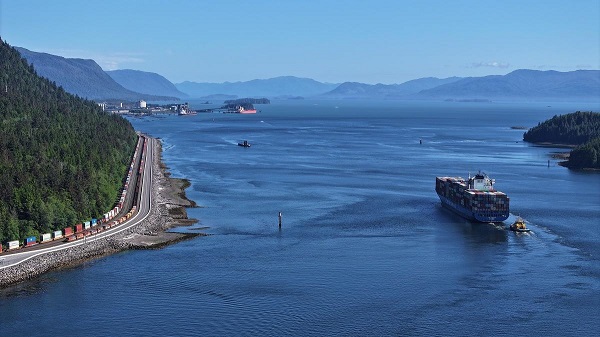
 Business2 days ago
Business2 days agoWhy it’s time to repeal the oil tanker ban on B.C.’s north coast
-

 Alberta1 day ago
Alberta1 day agoAlberta Provincial Police – New chief of Independent Agency Police Service
-
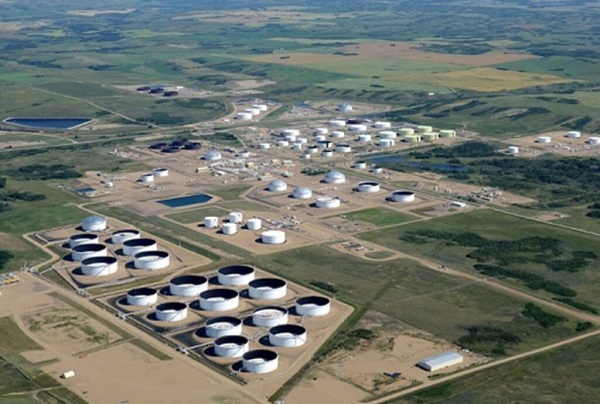
 Alberta2 days ago
Alberta2 days agoPierre Poilievre – Per Capita, Hardisty, Alberta Is the Most Important Little Town In Canada
-
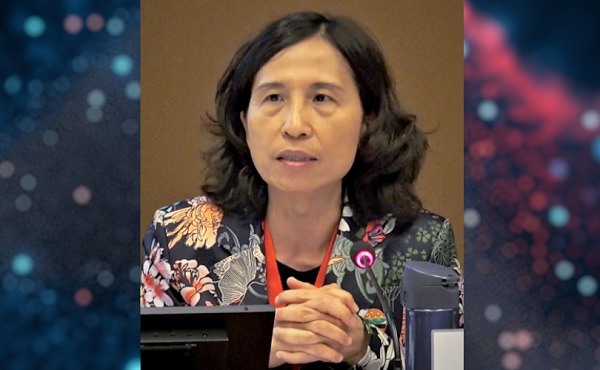
 COVID-191 day ago
COVID-191 day agoTop COVID doctor given one of Canada’s highest honors
-
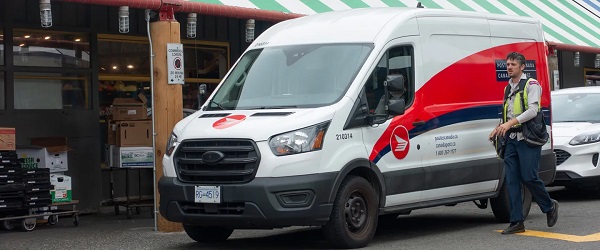
 Business2 days ago
Business2 days agoLatest shakedown attempt by Canada Post underscores need for privatization
-

 Agriculture10 hours ago
Agriculture10 hours agoCanada’s supply management system is failing consumers
-

 MxM News2 days ago
MxM News2 days agoUPenn strips Lia Thomas of women’s swimming titles after Title IX investigation


